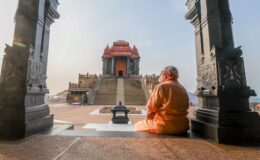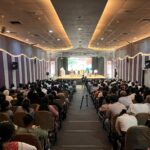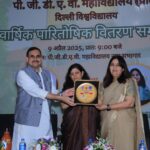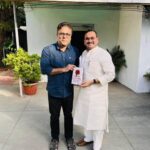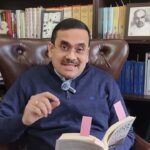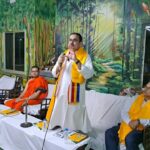How Aurobindo’s ‘Bande Mataram’ called for absolute independence and yet escaped British fury
- By : Anirban Ganguly
- Category : Articles
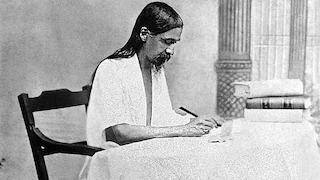
Sri Aurobindo’s editorials and articles in Bande Mataram, which he wrote almost daily between 1907 and 1908, are a comprehensive indicator and schema of his early political activism, its trajectory and thinking. They provide the reader with an insight into the nationalist political discourse of the era, and also the evolution of the nationalist movement, especially of the early phase. Often referred to as the pre-Gandhian phase, this was a time of political developments that laid the foundations on which the nationalist movement would later be broadened.
Bande Mataram came into action at a time when the advanced group within the Congress, or the ‘New Party’ as Sri Aurobindo termed it, was struggling to gain political control and ascendancy against the party’s old guards, known as the Moderates. As one of the principal leaders of the ‘New Party’, Sri Aurobindo felt the need for an English daily, through which the ideas and policies of the new nationalist group could be broadcast among the educated sections in Bengal and the rest of India.
George Curzon had partitioned Bengal in 1905. It was, as Sri Aurobindo told the British journalist and author Henry Nevinson, ‘the greatest blessings that had ever happened to India’, since ‘no other measure could have stirred national feeling so deeply or roused it so suddenly from the lethargy of previous years’. Sri Aurobindo saw Bande Mataram as a vehicle through which those feelings could be fomented and channelised across the country.
The early phase of the Indian freedom struggle had two distinct dimensions to it — one was public political action and the other was secret revolutionary activities aimed at violently overthrowing British rule. Sri Aurobindo saw the need for combining both these dimensions. In his short but intense period of political action, he succeeded, to a certain degree, in synergising the two. Bande Mataram emerged as the ideational platform for articulating and spreading the political philosophy and policies of his ‘New Party’. It soon acquired wide popularity. Read throughout India, it came to be identified with Sri Aurobindo’s politics, and the politics of the Extremists: Bande Mataram was almost unique in journalistic history in the influence it exercised in converting the mind of a people and preparing it for revolution.
Sri Aurobindo’s editorials in Bande Mataram, articulating the policies and political stance of the new party, were both intense and well-argued; and were read and appreciated even by his political opponents and the British. The call for revolt in his columns was masterly couched in symbolism, the demand for non-cooperation astutely argued, making it difficult for the colonial censors to clamp down on the paper for sedition. Bande Mataram, as Sri Aurobindo observed, ‘was never prosecuted for its editorial articles’. In fact, there were complaints against its highly skilled messaging:
“The editor of the Statesman complained that they were too diabolically clever, crammed full of sedition between the lines, but legally unattackable because of the skill of the language. The Government must have shared this view, for they never ventured to attack the paper for its editorial or other articles, whether Sri Aurobindo’s or from the pen of his three editorial colleagues. There is also the fact that Sri Aurobindo never based his case for freedom on racial hatred or charges of tyranny or misgovernment, but always on the inalienable right of the nation to independence. His stand was that even good government could not take the place of national government — independence.”
SK Ratcliffe, a veteran British journalist with nationalist sympathies who had edited the Statesman for a while, described Bande Mataram in a letter to the Manchester Guardian in December 1950, decades after the paper had shut shop. He remembered how the daily had ‘struck a ringing new note in Indian journalism’. He gave a precise description of how Bande Mataram actually looked:
“It had a full-size sheet, was clearly printed on green paper, and was full of leading and special articles written in English with brilliance and pungency not hitherto attained in the Indian press. It was the most effective voice of what we then called nationalist extremism.”
The pages of Bande Mataram abounded with articles on ‘Swaraj, Swadeshi, Boycott, National Education’ — the four-fold programme on which the Extremist school based its politics. After much struggle behind the scenes, the Moderate leaders were obliged to incorporate these principles in the resolutions of the 1906 annual session of the Congress held in Kolkata. This was the first major political victory of the new party within the Congress. In the following months, Sri Aurobindo’s increasing involvement and gradual control of Bande Mataram would see the daily emerge as the mouthpiece of the new group.
Bipin Chandra Pal, one of the leading lights of the ‘new school’, had started Bande Mataram in 1906 with ‘only 500 rupees in his pocket’. Pal’s invitation to Sri Aurobindo to join the venture in support, and to write a lead article every day for the daily, saw ready consent from the latter. He wrote, ‘Sri Aurobindo saw his opportunity for starting the public propaganda necessary for his revolutionary purpose.’ The name chosen for the new daily signified both devotion to the motherland and defiance of the British authorities.
Though the daily was an immediate success, it soon ran into financial difficulties. Over the next few months, Sri Aurobindo ‘took up the joint editorship of the journal, edited the paper during Bipin Pal’s absence and induced the Nationalist Party to take it up as their organ and finance it’. Sri Aurobindo’s proposal to set up Bande Mataram as a joint-stock company to ensure its financial viability saw the Kolkata-based industrialist with Swadeshi sympathies, Subodh Chandra Basu-Mullick, and his brother, Nirodh, support the venture.
A close collaborator of Sri Aurobindo and an insider of the secret revolutionary network, Subodh not only financed the newspaper and provided for its office, but was also a benefactor of the national education movement. By late 1906, the circulation of Bande Mataram ‘was ever on the increase and its popularity was the envy of the pro-colonial or Anglo-Indian press’. Soon, Sri Aurobindo was practically in full control of the policy of the paper till his own arrest in the Alipore Bomb Case in 1908.
The year 1907, when Sri Aurobindo churned out most of the pieces for the newspaper, was also the fiftieth anniversary year of the revolt of 1857 — suggestive of the vortex and ferment of Indian politics of that time. His articles in Bande Mataram give an insight into the problems and the politics of the period.
Sri Aurobindo’s range in Bande Mataram was phenomenal. He wrote on social and economic issues, education, self-help, self-reliance, agriculture, the need to return to the land, rural empowerment, village organisations, national education, communal issues, riots and resistance and the Swadeshi movement—educational and commercial. He was caustic of moderate politics, inveterately aggressive towards the British and their supporters in the Anglo-Indian press, discussed the need for broad-basing the movement and repeatedly wrote of freedom and complete freedom. It was in the columns of Bande Mataram that Sri Aurobindo articulated his famous demand for absolute independence:
“The Congress has contented itself with demanding self-government as it exists in the Colonies. We of the new school would not pitch our ideal one inch lower than absolute Swaraj — self-government as it exists in the United Kingdom. We believe that no smaller ideal can inspire national revival or nerve the people of India for the fierce, stubborn and formidable struggle by which alone they can again become a nation.”
The article is an extract from the book Reading Sri Aurobindo edited by Gautam Chikermane and Devdip Ganguli, published by Penguin.



